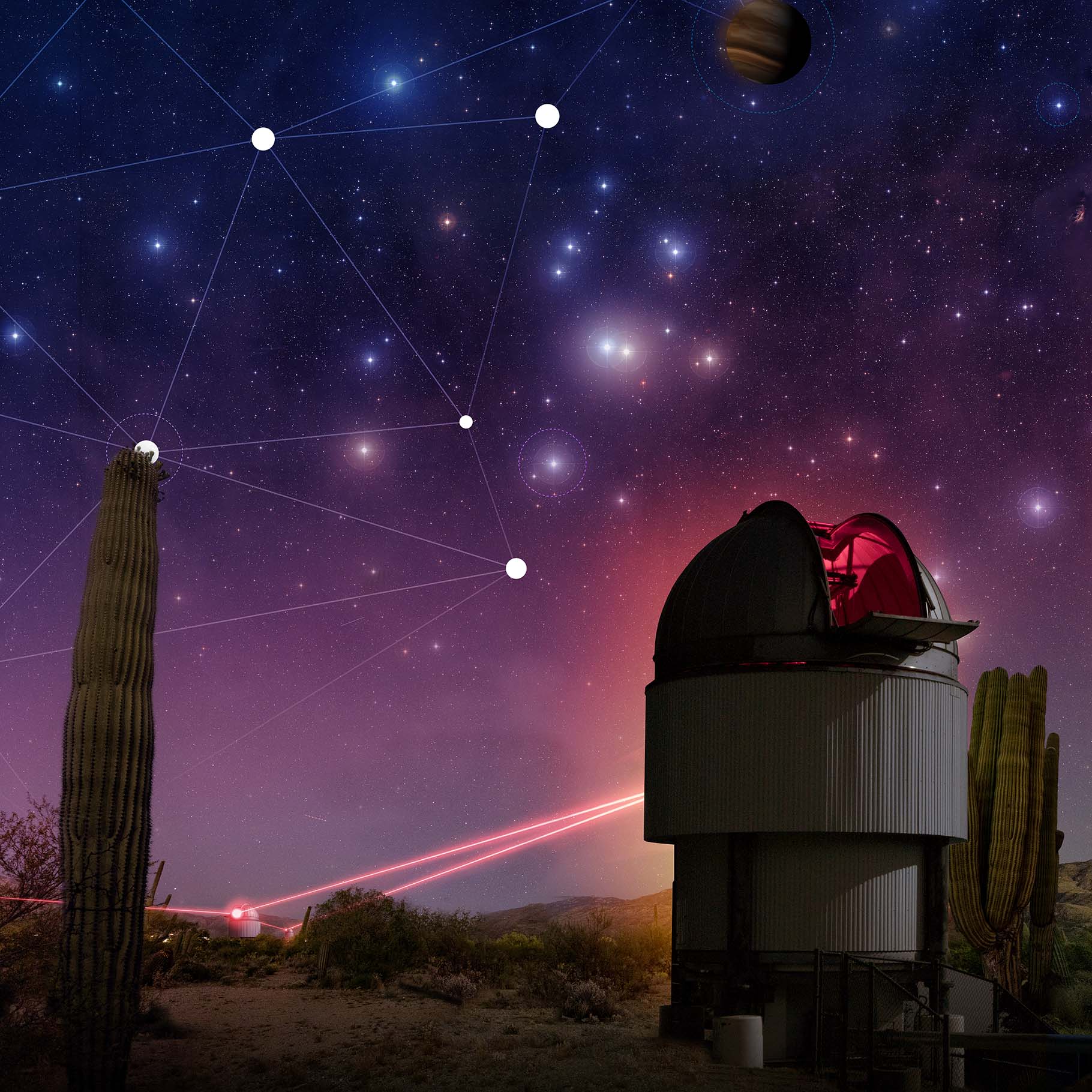Charting the Quantum Horizons of Astronomy

On March 11, 2024, researchers gathered in Tucson, Arizona for a workshop to discuss something new for astronomy: quantum-enabled optical interferometry. Being explored as the possible next step after building giant telescopes, this new capability could make it possible to combine the light from very widely separated telescopes so that they would function as one large collecting area. While radio telescopes like the VLA have exploited interferometry for decades, the challenges at optical wavelengths have been daunting.
Quantum optics could be a game-changer at optical wavelengths, increasing the resolution and sensitivity over conventional techniques many times over. Perhaps this technique could even make it possible to spy details of a distant planet orbiting a sun-like star.
The workshop was organized by NSF NOIRLab, which is funded by the U.S. National Science Foundation and managed by AURA, in collaboration with the Center for Quantum Networks (CQN), the Arizona Quantum Initiative (AQuI), and the Center for High Angular Resolution Astronomy (CHARA).
In his article for Science about the workshop, Dan Clery discusses the theory and challenges of optical interferometry. He writes:
When electromagnetic signals gathered from different locations are merged, the waves interfere—doubling in brightness where wave peak meets peak and canceling out where peak meets trough. By combining and processing the resulting patterns from many pairs of telescopes, an interferometer can assemble a detailed image of the source. Because radio waves are so long, it’s relatively easy to record the precise timing of the phase, or shape, of the waves at each telescope and interfere them later in a computer.
Visible light waves are 1 million times shorter, so such recording isn’t feasible for optical telescopes. Instead, the waves must be interfered in real time, with mirrors and vacuum pipes channeling the light from the telescopes to a central combiner. The light paths from each telescope must all be identical to less than one-millionth of a meter. As a result, today’s experimental optical interferometers struggle to span more than a few hundred meters, enough to measure the diameter of a star but not to see oceans and continents on one of its planets. “We need hundreds of kilometers to get the resolution we want,” says NOIRLab’s Stuartt Corder.
To get there, Corder says, astronomers want to “ride on the coattails” of quantum technologies developed for other uses. One is quantum memory, which can store the exact state of a photon—including its phase information—in the quantum state of an atom in a crystal lattice. Researchers in Australia and China have created such devices with erbium crystals, storing quantum states for several hours. In theory, quantum memories could be filled at distant telescopes and shipped to a central facility where the states could be converted back to photons and interfered, says John Bartholomew of the University of Sydney. “It keeps a model similar to current interferometry.”
This workshop is just the first step in an exciting collaboration between astronomers and quantum information scientists. A follow-up goal of the workshop is to write a joint white paper and/or publication that describes the concept of an on-sky demonstration of a quantum-enhanced telescope/interferometer.
